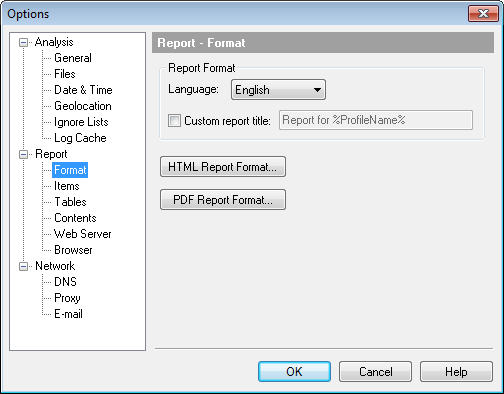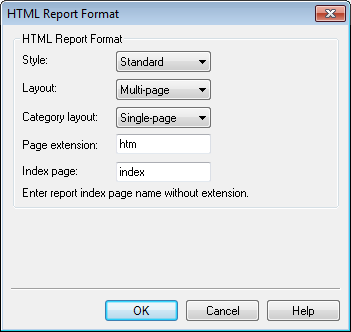
 You can also set format
options for specific report in the profile properties.
You can also set format
options for specific report in the profile properties.
|
|
Report language.
|
|
|
Use custom report title. You can use the
%ProfileName% (profile name) and
%DomainName% (domain name specified
in the profile properties) macros in the report title.
|
HTML Report Format

|
|
Report style.
|
|
|
Generate multi-page or single-page reports.
|
|
|
Generate report categories on multiple or
single page.
|
|
|
File extension used for report pages.
|
|
|
Report index page name without extension.
|
PDF Report Format

|
|
Page size for generated reports.
|
|
|
Show report contents when opening report
files.
|
|
|
Embed used fonts in generated PDF files. Font
embedding causes the PDF files to be larger but they can be viewed
correctly even if used fonts aren't installed on computer where the
files are viewed.
|